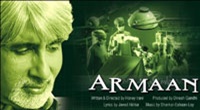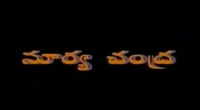Sa?s?ra (/s?m?s??r?/) is a Sanskrit word that means "wandering" or "world", with the connotation of cyclic, circuitous change. It also refers to the theory of rebirth and "cyclicality of all life, matter, existence", a fundamental assumption of all Indian religions. Sa?s?ra is sometimes referred to with terms or phrases such as transmigration, karmic cycle, reincarnation, and "cycle of aimless drifting, wandering or mundane existence".
The concept of Sa?s?ra has roots in the Vedic literature, but the theory is not discussed there. It appears in developed form, but without mechanistic details, in the early Upanishads. The full exposition of the Sa?s?ra doctrine is found in Sramanic religions such as Buddhism and Jainism, as well as the various schools of Hindu philosophy, after about the mid 1st millennium BCE. The Sa?s?ra doctrine is tied to the Karma theory of Indian religions, and the liberation from Sa?s?ra has been at the core of the spiritual quest of Indian traditions, as well as their internal disagreements. The liberation from Sa?s?ra is called Moksha, Nirvana, Mukti or Kaivalya.
Contents
Etymology and terminology
Sa?s?ra (Sanskrit: ?????) means "wandering", as well as "world" wherein the term connotes "cyclic change". Sa?s?ra is a fundamental concept in all Indian religions, is linked to the karma theory, and refers to the belief that all living beings cyclically go through births and rebirths. The term is related to phrases such as "the cycle of successive existence", "transmigration", "karmic cycle", "the wheel of life", and "cyclicality of all life, matter, existence". Many scholarly texts spell Sa?s?ra as Samsara.
According to Monier-Williams, Sa?s?ra is rooted in the term Sa?s? (????), which means "to go round, revolve, pass through a succession of states, to go towards or obtain, moving in a circuit". A conceptual form from this root appears in ancient texts as Sa?sara?a, which means "going around through a succession of states, birth, rebirth of living beings and the world", without obstruction. The term shortens to Sa?s?ra, referring to the same concept, as a "passage through successive states of mundane existence", a transmigration, metempsychosis, a circuit of living where one repeats previous states, from one body to another, a worldly life of constant change, that is rebirth, growth, decay and redeath. The concept is then contrasted with the concept of moksha, also known as mukti, nirvana, nibbana or kaivalya, which refers to liberation from this cycle of aimless wandering.
The concept of Samsara developed in the Vedic times, and is traceable in the Samhita layers such as in sections 1.164, 4.55, 6.70 and 10.14 of the Rigveda. While the idea is mentioned in the Samhita layers of the Vedas, there is lack of clear exposition there, and the idea fully develops in the early Upanishads. Damien Keown states that the notion of "cyclic birth and death" appears around 800 BCE. The word Sa?s?ra appears, along with Moksha, in several Principal Upanishads such as in verse 1.3.7 of the Katha Upanishad, verse 6.16 of the Shvetashvatara Upanishad, verses 1.4 and 6.34 of the Maitri Upanishad.
The word Samsara is related to Sa?s?ti, the latter referring to the "course of mundane existence, transmigration, flow, circuit or stream".
Definition and rationale
The word literally means "wandering through, flowing on", states Stephen J. Laumakis, in the sense of "aimless and directionless wandering". The concept of Sa?s?ra is closely associated with the belief that the person continues to be born and reborn in various realms and forms.
The earliest layers of Vedic text incorporate the concept of life, followed by an afterlife in heaven and hell based on cumulative virtues (merit) or vices (demerit). However, the ancient Vedic Rishis challenged this idea of afterlife as simplistic, because people do not live an equally moral or immoral life. Between generally virtuous lives, some are more virtuous; while evil too has degrees, and the texts assert that it would be unfair for god Yama to judge and reward people with varying degrees of virtue or vices, in "either or" and disproportionate manner. They introduced the idea of an afterlife in heaven or hell in proportion to one's merit, and when this runs out, one returns and is reborn. This idea appears in ancient and medieval texts, as the cycle of life, death, rebirth and redeath, such as section 6:31 of the Mahabharata and section 6.10 of Devi Bhagavata Purana.
History
The historical origins of a concept of a cycle of repeated reincarnation are obscure but the idea appears in texts of both India and ancient Greece during the first millennium BCE.
The idea of Samsara is hinted in the early Vedic texts such as the Rigveda, but the theory is absent. The early textual layers of the Vedas mention and anticipate the doctrine of Karma and rebirth, however states Stephen Laumakis, the idea is not fully developed. It is in the early Upanishads where these ideas are more fully developed, but there too the discussion does not provide specific mechanistic details. The detailed doctrines flower with unique characteristics, starting around the mid 1st millennium BCE, in diverse traditions such as in Buddhism, Jainism and various schools of Hindu philosophy.
Some scholars state that the Samsara doctrine may have originated from the Sramana traditions and was then adopted by the Brahmanical traditions (Hinduism). The evidence for who influenced whom in the ancient times, is slim and speculative, and the odds are the historic development of the Samsara theories likely happened in parallel with mutual influences.
Punarmrityu: redeath
While Sa?s?ra is usually described as rebirth and reincarnation of living beings, the chronological development of the idea over its history began with the questions on what is the true nature of human existence and whether people die only once. This led first to the concepts of Punarm?tyu ("redeath") and Punarav?tti ("return"). These early theories asserted that the nature of human existence involves two realities, one unchanging absolute Atman (soul) which is somehow connected to the ultimate unchanging immortal reality and bliss called Brahman, and that the rest is the always-changing subject (body) in a phenomenal world (Maya). Redeath, in the Vedic theosophical speculations, reflected the end of "blissful years spent in svarga or heaven", and it was followed by rebirth back in the phenomenal world. Samsara developed into a foundational theory of the nature of existence, shared by all Indian religions.
Rebirth as a human being, states John Bowker, was then presented as a "rare opportunity to break the sequence of rebirth, thus attaining Moksha, release". Each Indian spiritual tradition developed its own assumptions and paths (marga or yoga) for this spiritual release, with some developing the ideas of Jivanmukti (liberation and freedom in this life), while others content with Videhamukti (liberation and freedom in after-life).
The first truth, suffering (Pali: dukkha; Sanskrit: duhkha),
is characteristic of existence in the realm of rebirth,
called samsara (literally “wandering”).
—Four Noble Truths, Donald Lopez
The Sramanas traditions (Buddhism and Jainism) added novel ideas, starting about the 6th century BCE. They emphasized human suffering in the larger context, placing rebirth, redeath and truth of pain at the center and the start of religious life. Samsara was viewed by the Sramanas as a beginningless cyclical process with each birth and death as punctuations in that process, and spiritual liberation as freedom from rebirth and redeath. The samsaric rebirth and redeath ideas are discussed in these religions with various terms, such as ?gatigati in many early Pali Suttas of Buddhism.
Evolution of ideas
Across different religions, different soteriology were emphasized as the Sa?s?ra theories evolved in respective Indian traditions. For example, in their Sa?s?ra theories, states Obeyesekere, the Hindu traditions accepted Atman or soul exists and asserted it to be the unchanging essence of each living being, while Buddhist traditions denied such a soul exists and developed the concept of Anatta. Salvation (moksha, mukti) in the Hindu traditions was described using the concepts of Atman (self) and Brahman (universal reality), while in Buddhism it (nirvana, nibbana) was described through the concept of Anatta (no self) and ??nyat? (emptiness).[63][64]
The Ajivika tradition combined Sa?s?ra with the premise that there is no free will, while the Jainism tradition accepted the concept of soul (calling it "jiva") with free will, but emphasized asceticism and cessation of action as a means of liberation from Sa?s?ra it calls bondage.[65][66] The various sub-traditions of Hinduism, and of Buddhism, accepted free will, avoided asceticism, accepted renunciation and monastic life, and developed their own ideas on liberation through realization of the true nature of existence.[67]
Sams?ra in Hinduism
Watch movie Samsara online on Amazon
Watch movie Samsara online
Watch The Movie On PrimeDil Hai Ke Manta Nahin Full HD Movie Download

Lovesongs Yesterday Today and Tomorrow Full HD Movie Download

Armaan Full HD Movie Download

Salakhen (1975) Full HD Movie Download
.jpg)
Nuvvu Vasthavani Full HD Movie Download

The Hero-Abhimanyu Full HD Movie Download

Mirza Ghalib Full HD Movie Download

Patth Full HD Movie Download

Saugandh Geeta Ki Full HD Movie Download

Karma (Malayalam) Full HD Movie Download
.jpg)
Jung (2000) Full HD Movie Download
.jpg)
Raaj-The Showman Full HD Movie Download

Kempegowda Full HD Movie Download

Carnival Full HD Movie Download

Due Date Full HD Movie Download

Anjaneyulu Full HD Movie Download

Jeeva Full HD Movie Download

Pelli Kanuka Full HD Movie Download

Surya Chandra Full HD Movie Download

Nakhuda Full HD Movie Download

Chak De India Full HD Movie Download

Download latest Movie from bollywood
- 1> baaghi 3
- 2> THE SKY IS PINK MOVIE FULL STORY AND REVIEW
- 3> Luka Chuppi
- 4> TO ALL THE BOYS I’VE LOVED BEFORE
- 5> Kabir Singh
- 6> Street Dancer 3D
- 7> Simmba
- 8> Gone Girl
- 9> The Girl Who Lived
- 10> Ludo
- 11> DILWALE DULHANIA LE JAYENGE
- 12> GUILTY
- 13> The Godfather
- 14> Adventures of Rusty
- 15> Sooryavanshi
- 16> Satyameva Jayate 2
- 17> Thappad
- 18> Bhool Bhulaiyaa 2
- 19> KGFChapter 2
- 20> Mardaani 2
- 21> Pinjar
- 22> Shivaji maharaj
- 23> Ek Villian 2
- 24> Hungama 2
- 25> Divergent
- 26> Mumbai Saga
- 27> The Internship
- 28> HIT (telugu)
- 29> Panga
- 30> The perfect date
- 31> 16 December
- 32> Gopala Gopala (Telugu)
- 33> Brahmastra
- 34> Gangubai Kathiawadi
- 35> Manmadhudu
- 36> Nenu local
- 37> Mahanati
- 38> Shatamanam bavathi
- 39> Lagaan
- 40> After
- 41> MOM
- 42> Shamshera
- 43> Raguvaran BTech
- 44> Khakee
- 45> The villain
- 46> OM
- 47> Mr. perfect
- 48> Bueatifull mind
- 49> Hichki
- 50> Gabbar Singh
- 51> Jogi
- 52> Before Sunrise
- 53> Before Sunset
- 54> Before Midnight
- 55> The Big Bull
- 56> Top Gun: Maverick
- 57> The Purge
- 58> The Sky is Pink
- 59> Laxmmi Bomb
- 60> Sadak 2
- 61> Sufna
- 62> Prithviraj
- 63> PK
- 64> Coolie No 1(2020)
- 65> Black Widow
- 66> Dear Zindagi
- 67> Dil Bechara
- 68> PHIR HERA PHERI
- 69> WAR
- 70> Dostana
- 71> RRR: Roudram Ranam Rudhiram
- 72> Maidan
- 73> Dabbang 3
- 74> Chhalaang
- 75> life as we know it
- 76> SherShaah
- 77> Sandeep Aur Pinky Faraar
- 78> Event Horizon
- 79> 83
- 80> Radhe: Your Most Wanted Bhai
- 81> Gunjan Saxena: The Kargil Girl
- 82> Mr India
- 83> Vivah
- 84> Anokha Bandhan
- 85> Ghost
- 86> Bhoot: Part One - The Haunted Ship
- 87> Haseen Dilruba
- 88> Laal Singh Chaddha
- 89> Qismat
- 90> Rajput
- 91> Drive
- 92> Dil Chahta Hai
- 93> Dil Ki Baazi
- 94> Dil Ka Rishta
- 95> Teesri Manzil
- 96> Dil
- 97> Love Aaj Kal
- 98> Khaali Peeli
- 99> Bunty Aur Babli 2
- 100> Atrangi Re
- 101> Gulabo Sitabo
- 102> Jodi
- 103> Suraj Pe Mangal Bhari
- 104> Deewana
- 105> Attack
- 106> Sardar Udham Singh
- 107> Toofan
- 108> THE LOVEBIRDS
- 109> Jersey
- 110> Ginny Weds Sunny
- 111> Thalaivi
- 112> Shiddat
- 113> Angels vs Zombies
- 114> Koi Mil Gya
- 115> Thank God
- 116> Bhuj: The Pride of India
- 117> Hum Aapke Hain Kaun
- 118> The Platform
- 119> Bird Box
- 120> Roohi Afzana
- 121> Torbaaz
- 122> Nikamma
- 123> World War Z
- 124> Extraction
- 125> Train to Busan
- 126> Life of Pi
- 127> SHAADI MEIN JROOR AANA
- 128> Himmat Aur Mehnat
- 129> To All The Boys: P.S. I Still Love You
- 130> Mimi
- 131> Good Newwz
- 132> Shubh Mangal Zyada Saavdhan
- 133> Raabta
- 134> Harry Potter and the Philosopher's Stone
- 135> Harry Potter and the Chamber of Secrets
- 136> Chhapaak
- 137> War of the Worlds
- 138> Harry Potter and the Prisoner of Azkaban
- 139> Harry Potter and the Goblet of Fire
- 140> MURDER MYSTERY
- 141> Shakuntala Devi
- 142> Bachchan Pandey
- 143> Jayeshbhai Jordar
- 144> Sheer Qorma
- 145> Saina
- 146> 'O' Pushpa I hate tears
- 147> Kedarnath
- 148> MS Dhoni The Untold Story
- 149> Chhichhore
- 150> Badhaai Ho
- 151> Unstoppable
- 152> Oz the Great And Powerful
- 153> The Girl on the Train
- 154> Haathi Mere Saathi 2020
- 155> The Conjuring: The Devil Made Me Do It
- 156> Gandhi Se Pehle Gandhi
- 157> The Song of Scorpions
- 158> Srimanthudu
- 159> Hello Guru Prema Kosame
- 160> Beauty and The Beast
- 161> Black Panther
- 162> Charlie and the Chocolate Factory
- 163> Bole Chudiyan
- 164> Fidaa
- 165> Duvvada Jagannadham
- 166> Bruce Lee: The Fighter
- 167> Hyper
- 168> Yaara
- 169> Red (2020)
- 170> Shivam
- 171> That Is Mahalakshmi
- 172> Nishabdham
- 173> Aashram 2020 web series
- 174> Laxmii
- 175> Mismatched
- 176> STUDENT OF THE YEAR 2
- 177> NAIL POLISH
- 178> Ramprasad Ki Tehrvi
- 179> KAAGAZ
- 180> 12 o Clock
- 181> The Power
- 182> bolo hau
- 183> Tribhanga
- 184> JAMUN
- 185> Madam Chief Minister
- 186> Maasaab
- 187> Aadhaar
- 188> Tanhaji
- 189> Bhaagi 3
- 190> Bhootnath
- 191> MALANG
- 192> Jai Mummy Di
- 193> Haathi Mere Saathi 2021
- 194> Shakeela
- 195> Unpaused
- 196> Annayya
- 197> Vamsoddharakudu
- 198> Mrugaraju
- 199> Narasimha Naidu
- 200> Sankranti
- 201> Manasu Maata Vinadhu
- 202> Anjaane
- 203> Apaharan
- 204> Bachke Rehna Re Baba
- 205> Bewafaa
- 206> Roohi
- 207> Radhe
- 208> Zindagi Khoobsoorat Hai
- 209> Yeh Mohabbat Hai
- 210> Yeh Kya Ho Raha Hai?
- 211> The Tomorrow War
- 212> DehradunDiary
- 213> Meri Shaadi Karaoo
- 214> Matruu Ki Bijlee Ka Mandola
- 215> No One Killed Jesica
- 216> Aag Ka Goola
- 217> Eight Million Dollars
- 218> Three Hundred
- 219> Cats and Dog
- 220> Decoy
- 221> Gold Rush
- 222> You Have Got Mail
- 223> Final Destination three
- 224> Tofan
- 225> Jungle
Request for Download movie Samsara
- Bollywood movies
- Latest Bollywood movies
- Download all bengali movies
- Download all bhojpuri movies
- Download all english movies
- Download all gujarati movies
- Download all hindi movies
- Download all kannada movies
- Download all malayalam movies
- Download all marathi movies
- Download all oriya movies
- Download all punjabi movies
- Download all tamil movies
- Download all telugu movies
- Bollywood action movies
- Bollywood adventure movies
- Bollywood animation movies
- Bollywood classical movies
- Bollywood comedy movies
- Bollywood crime movies
- Bollywood devotional movies
- Bollywood documentary movies
- Bollywood drama movies
- Bollywood family movies
- Bollywood fantasy movies
- Bollywood historical movies
- Bollywood history movies
- Bollywood horror movies
- Bollywood musical movies
- Bollywood mystery movies
- Bollywood mythological movies
- Bollywood patriotic movies
- Bollywood romance movies
- Bollywood romantic movies
- Bollywood sci-fi movies
- Bollywood social movies
- Bollywood spiritual movies
- Bollywood sports movies
- Bollywood suspense movies
- Bollywood thriller movies
- Bollywood war movies
- Hot actress list
- Hot gujarati actress list
- Hot tamil actress list
- Hot bhojpuri actress list
- Hot assam actress list
- Hot bihari actress list
- Hot jammu and kashmir actress list
- Hot gujarati actress list
- Hot haryana actress list
- Hot konkani actress list
- Hot marathi actress list
- Hot odia actress list
- Hot punjabi actress list
- Hot rajasthani actress list
- Hot kannada actress list
- Hot malayalam actress list
- Hot telugu actress list
- Hot tulu actress list
- Hot Actress list from Indian city
- Hot actress list from ahmedabad
- Hot actress list from alappuzha
- Hot actress list from bangalore
- Hot actress list from bangalore
- Hot actress list from bhopal
- Hot actress list from chandigarh
- Hot actress list from chennai
- Hot actress list from guwahati
- Hot actress list from hyderabad, india
- Hot actress list from indore
- Hot actress list from jaipur
- Hot actress list from kannur
- Hot actress list from kochi
- Hot actress list from kolkata
- Hot actress list from kollam
- Hot actress list from kottayam
- Hot actress list from kozhikode
- Hot actress list from lucknow
- Hot actress list from madurai
- Hot actress list from mangalore
- Hot actress list from mumbai
- Hot actress list from mysore
- Hot actress list from new delhi
- Hot actress list from patna
- Hot actress list from pune
- Hot actress list from thiruvananthapuram
- Hot actress list from thrissur
- Hot actress list from tiruchirappalli
- Hot actress list from vijayawada
- Hot actress list from visakhapatnam
- All Bollywood Movies
- Bollywood Celeb
- >Art Director
- >Audiography
- >Background Music
- >Banner
- >Choreographer
- >Cinematographer
- >Costume Designer
- >Dialogue Writer
- >Director
- >Distributor
- >Editor
- >Executive Producer
- >Hair Stylist
- >Lyricist
- >Music Director
- >Photographer
- >Playback Singers
- >Presenter
- >Producer
- >Production Company
- >Production Designer
- >Screenplay
- >Singer
- >Sound
- >Actor
- >Story Writer
- >Studio
- >Video Director
- >Miscellaneous
- >Publicity (pro)
- >Web Creator
- >Production Labs
- >Publicity Design
- >Publicity Stills
- >Writer
- >Miscellaneous Artists
- >Visual Effects
- >Reporter
- >Music Company
- >Shooting Studios
- >Picturised On
- >Line Producer
- >Co Producer
- >Asst Director
- >Casting Director
- >Cinematography
- >Choreography
- >Dialouge
- >Editing
- >Lyrics
- >Music
- >Story
- >Playback Singer Female
- >Playback Singer Male
- >Actor In A Comic Role (male/female)
- >Child Artiste
- >Ensemble Cast
- >Actor Popular Choice (male)
- >Actor Popular Choice (female)
- >Sa Re Ga Ma Pa Song Of The Year
- >Actor In Supporting Role
- >Actress In Supporting Role
- >Actor In Leading Role
- >Art Direction
- >Actress In Leading Role
- >Sound Recording
- >Costume Design
- >Special Effects
- >Action
- >Actor In A Negative Role
- >Lifetime Achievement Award
- >Cinematic Exellence (director)
- >Cinematic Exellence (male)
- >Cinematic Exellence (female)
- >International Male Icon
- >International Female Icon
- >Actor In A Supporting Role (male)
- >Actor In A Supporting Role (female)
- >Actor In A Comic Role
- >Playback Singer (male)
- >Playback Singer (female)
- >Most Promising Debut (female)
- >Most Promising Debut (male)
- >Most Promising Director
- >Sound Design
- >Lifetime Jodi
- >Marketed Film
- >Jury Award For Best Actor
- >Jury Award For Best Actress
- >Jury Award For Best Film
- >Jury Award For Best Director
- >Playback Singer(male)
- >Lifetime Acheivement Award (male)
- >Excellence Award
- >Jodi Award
- >Performer Of The Year
- >Presented By
